Yearbook curriculum
Looking for inspiration, design tricks, how to make a great cover, promoting your yearbook and engaging your community?
Most recent
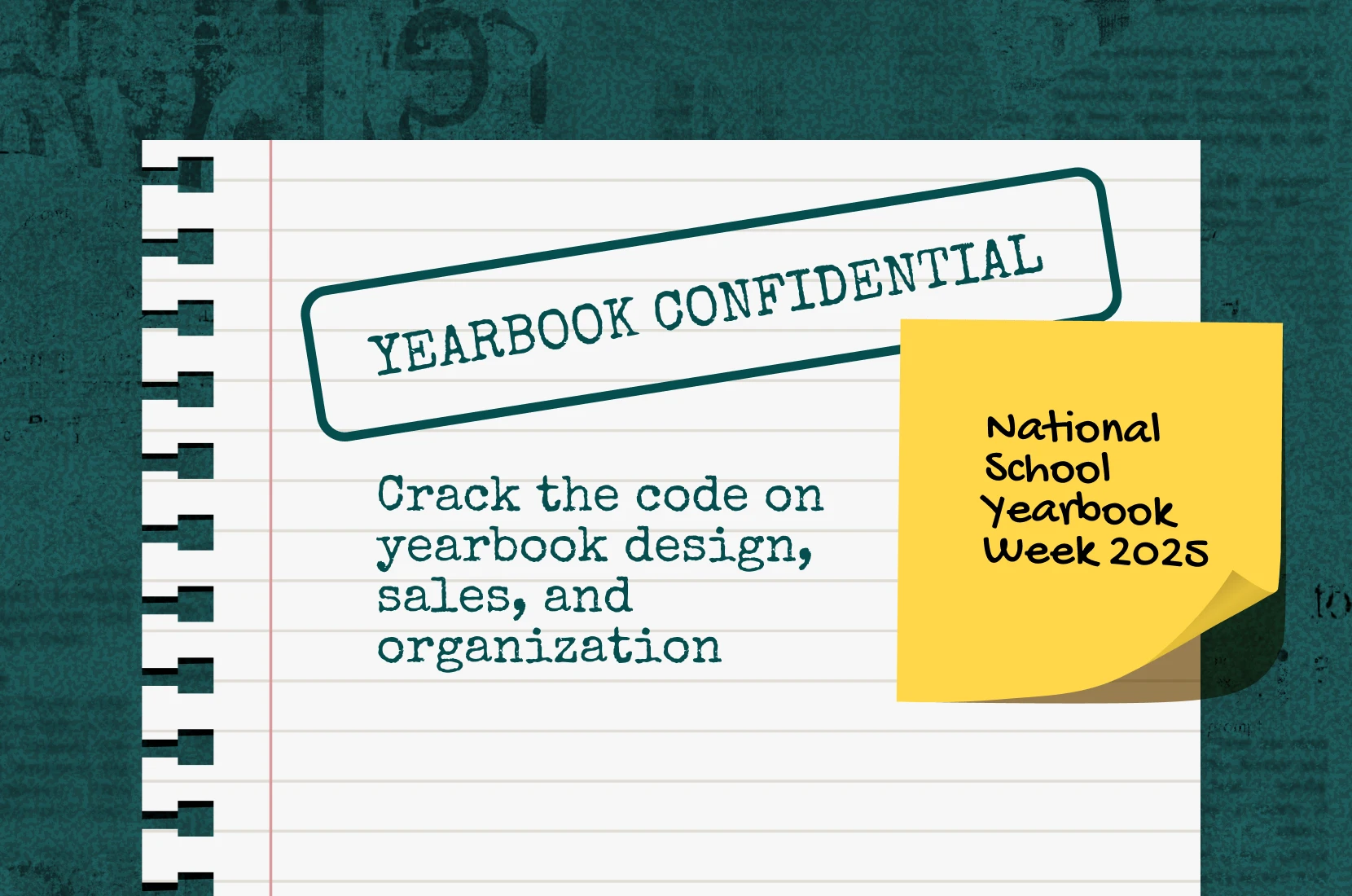
National school yearbook week 2025: ideas to celebrate
With Proclamation 5703, former President Ronald Reagan made yearbooks even more celebration-worthy by setting apart the first week of October for “appropriate ceremonies and activities” to recognize the creators and the power of a yearbook program. Treering intends to do just that during National School Yearbook Week, October 6-10, 2025.
Yearbook confidential: your briefing
Yearbook creators will have declassified access to live training, photo contests, and giveaways. (If you’re super in love with the vibe, check out the Top Secret theme that just dropped for your yearbook.)
Yearbook contests
There are six ways to win: one week-long yearbook Bingo game and five daily Facebook giveaways.
Monday, October 6
Bingo begins. Download your unique bingo card and play along. We’ll “call” words via Meta stories (see them on Facebook and Instagram). The first verified Bingo winner will receive a Canon EOS Rebel T7 DSLR camera with an 18-55mm lens. Get the full Bingo rules here.
Additionally, yearbook creators can share their favorite fall photo to our “Operation Autumn Aesthetic” Facebook photo contest. The strongest storytelling photo will win a $50 gift card.
Tuesday, October 7
Share your insider ideas for photo organization on our daily Facebook giveaway post. HQ (aka Treering’s marketing department) will reward one adviser at random with a $50 gift card.
Meta stories for our week-long Bingo game will continue.
Wednesday, October 8
Another $50 gift card is up for grabs. We want to see your yearbook squad. The most creative team photo wins the daily Facebook post challenge.
If a verified Bingo winner has not come forward, we will increase the calls.
Thursday, October 9
Share your yearbook space, class, or desk on our daily Facebook post for the chance to win. The type-A, TikTok-inspired, and completely unhinged–we want to see them all.
Friday, October 10
Close National School Yearbook Week 2025 with your best sales tips or ideas for a chance to score a $50 gift card on our Facebook post.
Live training
Treering Live (TRL) is Treering’s flagship event. During National School Yearbook Week, TRL will have all the design training, coveted prizes, and organization inspiration that yearbook advisers have come to expect.
What to expect at Treering Live: not-so-top-secret training
With your free registration, Treering Live: Yearbook Confidential features 19 sessions over two days. The programming spans from adviser basics to an interactive photography session. Your mission, should you choose to accept it, is to join HQ for intel, ideas, and a little undercover fun.
The schedule, like Treering, is fully customizable.
Tuesday sessions
1:00 pm PT: Opening session
1:10 pm PT: Session 1 - choose one session to attend
- Top 10 questions new advisers ask
- Yearbook design trends
- Teaching yearbook: curriculum overview
1:50 pm PT: Session 2 - choose one breakout session to attend
- Live demo: portraits
- Adviser roundtable
2:30 pm PT: Session 3 - choose one breakout session to attend
- Photo tips
- Live demo: yearbook style guides
- Getting more students in the book
3:10 pm PT: Session 4 - choose one breakout session to attend
- Anatomy of a yearbook
- Teaching yearbook: theme
3:45 pm PT: Closing session
Wednesday sessions
1:00 pm PT: Opening session
1:10 pm PT: Session 1 - choose one breakout session to attend
- Building your team: yearbook jobs and recruitment
- Treering design tools
- Photo journalism (interactive session)
1:50 pm PT: Session 2 - choose one breakout session to attend
- Yearbook mistakes to avoid
- Live demo: upgrading portrait pages
2:30 pm PT: Session 3 - choose one breakout session to attend
- Top 10 questions parents ask
- Live demo: from good to great
3:10 pm PT: Session 4 - choose one breakout session to attend
- Live demo: page templates
- Teaching yearbook: writing
3:45 pm PT: Closing session
All sessions will be available on the Yearbook Club Replay, so you can re-watch those a-ha moments and catch any sessions you missed through May 2026.
Mission parameters: bingo rules and FAQs
The National School Yearbook Week 2025 Bingo winner must be 18 or older and a Primary Chief Editor or Chief Editor at a US Treering school for the 2025-2026 school year. No purchase is necessary to participate.
By participating, you approve Treering to use your name, write-up, and school name for any marketing purposes, including but not limited to treering.com, social media, and mass media.
1. How do I get my bingo card?
On Monday, October 6, each player will receive an email to download a card. Each one is a unique card with a number. Save your card—you’ll need it to claim a win.
2. How will clues be called?
A third-party Bingo randomizer will randomly select words, which will be announced via Meta stories (Facebook and Instagram) and in the Zoom Events lobby during Treering Live.
3. How do I mark my card?
Print your card or track digitally. Mark off words as they are called.
4. What counts as a bingo?
We are playing classic Bingo: a straight line of five words (horizontal, vertical, or diagonal).
5. How do I claim a win?
Email marketing@treering.com immediately with your name, Treering school, and card number. The first valid email received is the winner.
6. What happens after I email my win?
We’ll verify your card against our called words. The first valid email received is the winner.
7. Can more than one person win?
No, only the first verified winner counts.
8. What if I lose my card?
No problem, just download your card again. You may have missed some words; jump on our socials to get caught up.
9. How many rounds will we play?
There will be one round of Bingo from October 6-10, 2025.
10. What are the prizes?
The winner will receive a Canon EOS Rebel T7 DSLR camera with an 18-55mm lens. Treering will ship the camera directly to the school address associated with the winner’s Treering account.
11. Do I have to shout, “bingo?”
We aren’t going to stand in your way if you want to do the Bingo Boogie. Just remember to be the first to send an email marketing@treering.com with your name, Treering school, and card number to claim the prize.
12. Can I play if I join late?
Yes! All of the words announced via Meta stories will remain for 24 hours. You’ll just start marking from the current clue onward.
13. I’m a content creator. How can I share what I’m doing for National School Yearbook Week on social media?
Tag Treering Yearbooks (@treering on Facebook, @treeringcorp on Instagram and TikTok) and use the hashtags #NationalSchoolYearbookWeek, #NationalYearbookWeek, #YearbookWeek, #YearbookBingo
Social contest rules
The National School Yearbook Week 2025 photo contest winners must be 18 or older and a member of a Treering school for the 2025-2026 school year. No purchase is necessary to participate.
Valid posts must include an original photo. No AI images allowed. By participating, you have verified the approval of others pictured, and you approve Treering to use your name, write-up, and school name for any marketing purposes, including but not limited to showcasing on www.treering.com, sharing on social media, and sharing with media.
The photo criteria will be based on its creativity, relevant emotional impact (humor is more than acceptable), and overall aesthetic appeal.
If you have any questions, contact us at marketing@treering.com.
Nearly 30 years later, National School Yearbook Week remains a time to reminisce and a time to look forward, hopefully with a few wins for you and your yearbook program.

Fall crowdsourcing ideas for student & classroom photos
Starting and finishing strong isn't just for marathons (although advising yearbook sure feels like one at times). The fall months are ideal for beginning the momentum for your yearbook program. From building your team to selecting a yearbook theme, the fall is an ideal time to begin working alongside your school community. Fall in love with these tips to crowdsource more yearbook photos during September, October, and November.
Fall celebration photos to crowdsource
Use the fun “National Holidays” to create dress up days, activities, or even sidebar coverage for your yearbook. Libraries and DEAR Time can be the focus on September 6, Read a Book Day. Photographs of students with their stuffed friends on September 9’s National Teddy Bear Day make for a cuddly sidebar that pairs well within a classroom PJ Day. And let’s face it, nothing says volunteer and teacher appreciation like National Coffee Day on September 19!
Some other fall holidays to use when sourcing photos include:
- World Smile Day on the first Friday in October
- National Coaches’ Day on October 6
- National Reptile Awareness Day on October 21
- National Sandwich Day on November 3
- National STEAM Day on November 8
- National Education Week during the week before Thanksgiving
STEAM Day on November 8 is an opportunity to show students collaborating and also gather the whole picture (pun intended) of a project from ideation to completion!


Source POV photos
Social media continues to be a steady stream of photographs and posts from the perspectives of parents, staff, and students on your campus. Commenting, “May we use this in the yearbook?” is a way to build excitement for the book and encourage a student whose photo is truly worth sharing beyond their social feed. Some Treering schools promote a hashtag that equates reprinting permission and also makes it easy to search for images.
Using photographs sourced from parents, staff, and students adds a layer of authenticity to your yearbook because it involves new perspectives. Consider crowdsourcing photos from
- Fans at athletic events
- The cast and crew of the musical
- Art students and their in-progress works
- Two students snapping the same event, from different angles
- A period of time, such as the prep hours before the Homecoming dance
As always, a call to contribute to the yearbook is also a call to purchase a yearbook. Use these fall events as opportunities to sell yearbooks as well.
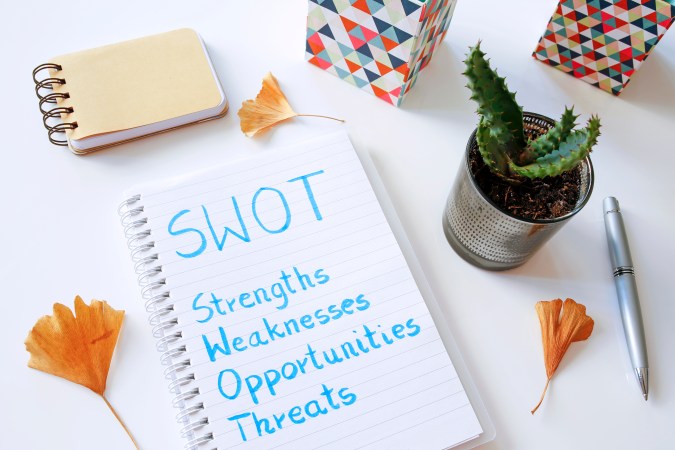

Partner with classroom teachers to source yearbook photos
There are those record-keeping, awareness-raising, champions of academia on campus who photograph student activities. Those are the teachers with whom to connect. (For every teacher-storyteller on your campus, there will be one overwhelmed with the idea of one more thing to do. Know your audience.)
Classroom photos don't always have to be posed group shots of students. Classroom photographs can also include workspace photographs. Flat lays of student and teacher desks or open backpacks offer insight into personality, workstyle patterns, and any quirks. This is also a way to feature those camera-shy campus personalities.
Some teachers choose to incorporate photography in their lessons. You may use the results as a way to showcase student art and cover classroom happenings.

Best yearbook tips: let our experienced advisers help!
Getting yearbook tips from experienced advisers is like getting head starts in races: It’s rare that you get them, but, when you do, you’ve got less work to do than you did an instant before. Find an adviser who’s willing to share his or her yearbook tips with you, and you’ll end up with advice on everything from how to encourage creativity and increase confidence in your reporting team to keeping the size of your yearbook committee manageable and finding the best ways to introduce design concepts. It doesn’t matter if you’re a 20-year adviser or a first-time parent volunteer: Good yearbook tips can make your year a little easier. The challenge, though, can be in finding the right people to give you the right advice.
That’s why we’ve created this post: Keep reading, and you’ll get great tips from experienced yearbook advisers. (This stuff is so good, by the way, that each tip is a direct quote from the adviser.) Let’s jump in.
7 yearbook tips from experienced advisers
1. How to boost creativity
“We always do a review of the previous year's book and discuss what worked and what didn't. We do a lot of brainstorming to come up with new ideas and angles.We try to look for interesting features that will make that spread unique. For example: Our wrestling spread last year...we learned that we had a girl wrestling on the team for the first time, and it was a very interesting story. We interviewed her and her teammates; it turned out to be one of our best features last year!We encourage our staff to carry a small notebook (yearbook journal) with them during the day. We instruct them to look for interesting features every day and jot them down in the notebook. They really like the idea of being "investigators" and getting the scoop! We also encourage them to create a Pinterest account and create a yearbook board. Pinterest has endless sources for yearbook: it has become a staple for our staff!We encourage them to "think outside the box.” All ideas are welcome; sometimes, they need to be "re-focused," but even the "overboard" ideas have given us something to work with!”
- Shari Black, North Stanly Middle School
2. How to promote your yearbook
“At our registration event before the school year started, I had a yearbook booth to show off the results of our first year using Treering. I ordered an extra copy of my yearbook to show them my two, free customized personal pages — both dedicated to the Kansas City Royals’ World Series championship last year. That sparked some ideas among parents and kids alike! (I used primarily photos that I took, or that friends on Facebook took, of the games and the victory parade.)”
- Kevin Worley, Northgate Middle School
3. How to keep your club manageable
“In the beginning, I thought the more hands/minds the better, but it was a bit more chaotic than I had hoped. Now, I limit my team to 10 people.We meet once a week for about an hour and cover anything that needs to be done and start new pages if we are ready to move on. We use Schoology at our school and I created a “club” page there which allows us to stay in constant contact as assignments are getting done. My club consists of 8th – 12th graders. I will generally put my younger ones in charge of tagging photos and making sure photos are moved to the proper folder. My seniors have a lot of say in how the senior section of our book will look and spend most of the year working through the special projects for that. My mid-age students will mostly work on page design. I do also have a student that I put in charge of proofing so we know we have a final eye on everything. We have so much fun coming up with new projects each year that it has been fairly easy keeping the excitement at a good level.”
- Rachel White, Cherokee Christian Schools
4. How to help students feel comfortable as reporters
“Make really meaningful, visually pleasing, and large yearbook press passes for your kids. A good pass will make them more confident in getting into tight spots to get photos and helps keep them on task. It will also help others be less freaked out or think: ‘Why is that kid pointing a camera at me?’. A good pass makes getting your kids access to things like the sidelines of games or free entrance to events easier as well. I like doing passes because I can customize them each year to match the theme and colors of the yearbook for that year, but others do shirts or pullovers, which work well also. Whatever you get, put some time/money in to help it feel legit.”
- Ben Johnson, Hutchison High School
5. How to introduce design concepts
“I usually start off the year by telling my students, ‘Design a page all about you.’ But that’s usually not enough guidance.This year, I’m going to start by saying, ‘Design a double page spread about Field Day.’ It’s an annual event at the school that all the kids know. I’ll give them all of the pictures from last year. Then, we’ll have their designs as a learning tool, and we’ll critique everyone’s designs.”
- Toni Vahlsing, Abington Friends School
6. How to step into a new role
“The most important thing I did when I became yearbook adviser was to interview students who had been involved in the process before me.I sat down with my new yearbook staff (which included those who had some experience) and we went through several years of books to decide what we thought worked and what didn’t, and made notes of what we wanted going forward.”
- Rachel White, Cherokee Christian Schools
7. How to generate sales
“I like to print perforated, blank business cards with our yearbook sales info, then hand them out to students and families.With these handy, portable cards, my yearbook staff—whose first names and last initials all appear on the card—can generate buzz or initiate conversations about sales by handing them out to classmates and friends. At Meet-the-Teacher Night, registration or other family/school events, I always have a stack handy.”
- Kevin Worley, Northgate Middle School
The best part of getting yearbook tips like this from advisers? Putting them to use, of course. Remember: advice comes from experience. It took these advisers time to figure out what works (and what doesn't) for their schools' yearbooks. The same will probably be the same for you, but these yearbook tips can give you a head start on solving any challenge you may face.

How to promote yearbook during our favorite fall holidays
Double, double, toil and trouble, are your fall yearbook sales in the rubble? Well, you’ve come to the right yearbook promotion page. Say it with us: pumpkin spice and everything nice, pumpkin spice and everything nice. Just kidding. A fun fall chant isn’t going to help, but we have a few easy yearbook promotion ideas highlighted below to increase your yearbook sales during the fall holidays
The fall holidays, in particular, are a great time frame to sell your yearbooks because parents and students have that feel-good feeling about yearbooks, especially since portrait day takes place around this time. (Or retake day—who can be perfect on the first try, right?)
Promotional idea 1: early-ghoul special
One way to market your yearbook and increase sales can be to offer a special discount. Those of us who are moms, know we love when good products go for great deals! Before Halloween, offer a fun-themed discount to the parents who buy the yearbook before Halloween before the prices get spooky. Or even after Halloween, once the costumes have been worn and the candy passed out, yearbook sales could become your next favorite holiday—like the day after Valentine’s Day. You know what we’re talking about: discounted chocolate!
If you’re down for a special, but don’t have the time to create your own yearbook flyers, don’t witch out! We want to help by giving you a professionally designed flyer template and even sales flyers, all customizable.
Promotional idea 2: Halloween party promotion
Most classrooms, even virtual ones, will celebrate the spooky, fun holiday of Halloween. Classrooms will have candy and lots of chatter and you can sell a scary amount of yearbooks. During the party is a great time to take pictures of everyone dressed up and promote that those pictures will be in the yearbook. Parents want to buy yearbooks if they know their kid is in the yearbook. Have your yearbook moms take photos at each holiday party and talk up the book!
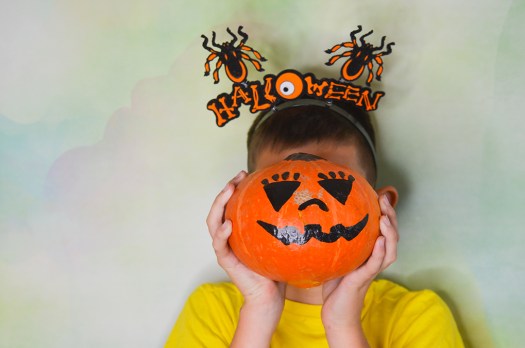
Promotional idea 3: turkey bowl giveaway
Everyone loves free stuff! Moms, kids—we mean everyone. A fun way you can sell more yearbooks is throwing a fall holiday raffle or a giveaway. First, you can offer a giveaway for everyone that has bought a yearbook before a certain day leading up to Thanksgiving. Everyone entered can win a gift or treat, like a gift card or a recognition ad.
Second, you could have a giveaway going on at the school that doesn’t require any parents to buy yearbooks, but to promote! For this giveaway, mouth-to-mouth marketing is going to sell your yearbooks because everyone is getting excited. Offer a free yearbook for the most photo submissions, or to a random follower of your school’s page who “likes” a social media post promoting the giveaway. You can turn the Turkey Bowl giveaway into a month-long social media contest to increase your school’s social channels engagement and build momentum with each post. Check out this social media calendar with ideas on how to run your contest!
Whatever direction you choose for marketing your yearbook this fall, Treering is here to help! While reaching sales goals immediately can be witch-ful thinking, it can definitely happen over time with some creative guidance.

Running a yearbook club
It’s different: there are no grades, no minimum enrollment requirement, and no mandatory, as in state-mandated attendance, slot in the schedule. While running a yearbook club is going to look different on each campus, we hope these tips from other club leaders help you grow your program.
Offer incentives for club members
Everyone starts with “What’s in it for me?” so add value to their hard work. Your students don’t get paid to work on the yearbook outside of class–heck, most of us don’t get paid to create the yearbook! We’re saints. That said, we’re the only ones who get it. Make a big deal of your students. Your yearbook club deserves to be celebrated, at a minimum, in your classroom.
Consider the perks:
- Free yearbooks (that they receive before the student body)
- Pizza work parties
- Club shirts (consider coordinating these with your yearbook theme)
- Press passes (aka yearbook IDs for lunch and free periods)
- Free game and dance admission when they’re “working”
- Snacks
Pro tip
Yearbook Hero Janet Yieh from San Francisco suggests setting up a rotation at larger events, such as the spring dance. Photographers compose their pictures differently and, with middle schoolers, you'll probably receive different samplings of friend groups too.

What does a yearbook club do?
Successful club advisers know their budding journalists and designers need direction. We can build a structure in which they’ll thrive.
1. Schedule regular meetings
Two meetings a week is what most advisers told us works for them. In the beginning of the year, the first meeting can be focused on all the how-to instructions with more and more independent work scheduled as the year advances or it can have a specific focus, like photography. (See what we did there?)
Pro tip
Sandy Violette from New Milford, CT spends time building a ladder before assigning pages. Then she sits with each student and uses the notes space in the Treering app to collaborate on an action plan for each spread.
2. Set up a google classroom for yearbook club
Breaking down the yearbook into manageable chunks is one way to make it appear more doable for student volunteers. In order for these parts to become whole, communication needs to be consistent and in a form with which they are familiar.
Pro tip:
Janet uses her Google Classroom to keep track of homework assignments, do event sign-ups, and post open jobs, such as tagging, that need to be accomplished. She also holds 1:1 coaching sessions because she knows, inevitably, students will have questions they won’t ask in class.
3. Do the grunt jobs yourself
Advisers should coordinate picture days (portrait, sports, and clubs) and flow the portraits. They should run the index. These are two tedious, yet critical jobs when it comes to accuracy.

Does the honor system work in a yearbook club?
Both Violette and Yieh agree: students show up and get their jobs done. They said there will be minimal issues if you set the expectations early and follow through. Communicate early. Communicate often.
If the need arises, revisit the expectations your student and their parent agreed to at the start of the year.
- Address issues early
- Follow the model: revisit the agreed-upon expectations, identify what went wrong, and document what will happen next
- Always leave it open for reconciliation
Yearbook Club is a vital record-keeping entity on your campus. Thank you for making it happen.

Yearbook examples: why studying sample content is critical (& how to do it)
Some days, you’re so deep into the pages of your yearbook that you can’t figure out how to solve a problem staring you in the face. That’s when you need yearbook examples from other schools.
School yearbook examples can be the single best tool in your arsenal when it comes to helping you solve design problems, find fresh story ideas and layout treatments, and build a library of best practices. It’s one of the reasons Pinterest has become a super-hot resource for yearbook ideas.The problem with Pinterest (and any other “lookbook” approach), though, is that you’re never going to get a full yearbook. And you’re certainly never going to get it in print. Both those factors mean you’re missing out on a lot; namely, context and the ability to easily revisit.
Why not, then, build up a library of yearbook examples from a bunch of other schools? It’s a tried-and-true approach at some of the best school yearbook programs across the country, and it’s really easy to do on your own. You just need to know where to look and who to ask.Inside this post, we’ll walk you through the reasons you should be getting your hands on other schools’ yearbook examples and how you can go about doing it.
Why you should be getting your hands on school yearbook examples
We already hinted at the big reasons for grabbing yearbook samples from other schools, but let’s take a second to make it super clear. You can’t beat having a whole book, in all its context, right in front of you. Think about it: You don’t release your yearbook one spread at a time on Pinterest for your students, do you? Of course not. You give them the whole thing, in all its printed glory, because that’s what the yearbook is all about. Each page and spread builds on the other to create a story of the entire school year. While learning how other schools shape their yearbook’s narrative is reason enough to collect yearbook examples, there are others, too.
Let’s explore a few of them:
- Find new design ideas. It’s a lot easier to have your yearbook team work through design problems and find inspiration when you have some great examples sitting in the same room as with them. And we’re not just talking about spread designs. Other schools’ yearbooks can serve as a way to work through design issues related to everything, including mods, folios, and section breaks—with the added benefit of seeing how those designs complemented theme development, were used as templates throughout the book, etc..
- Spot trends that fit your book. A new yearbook trend seems to pop up every year. Keeping track of them can be hard, and figuring out which ones are best for your yearbook can be even harder. It’s easier to spot them—and know which ones you like—when you have a library full yearbook samples from other schools.
- Identify story angles and themes. You might not know the students featured in other schools’ yearbooks, but that doesn’t matter much. They can still be a goldmine for identifying story angles, themes, and everything else that goes into shaping your yearbook’s narrative. Granted, you won’t use this stuff verbatim, but it’ll help you and your team look at your yearbook a little differently.
- Develop best practices. If you’re lucky enough to collect a bunch of yearbook samples that your team aspires to recreate, you’ve just found the ultimate resource for developing best practices. Gather those books, ask students to find commonalities among key aspects of the yearbook, and list them out. Use that as your guide for creating your own, best-of-the-best yearbook.
- Create new takes on old features. Some features, like table of contents and superlatives, are practically synonymous with the yearbook. But that doesn’t mean they need to be treated like status quo. In fact, a lot of schools have stopped doing that. Using your library of yearbooks as examples, you can find those refreshing approaches and draw inspiration to create your own.
- Practice critiques without hurting feelings. Teaching your yearbook team how to conduct critiques is important, but it’s not always easy when the only yearbook you have on hand is your own. It can be hard to be honest when you’re worried about insulting your friend’s work, and having yearbook samples can ease that tension and give everyone a safe place from which to practice critiques. Do that, and the actual critiques your team does will be that much easier and that much more effective.
If these reasons aren’t enough, well, here’s one more for you: Collecting yearbook examples can connect you with other yearbook advisers, volunteers, and students you would have never otherwise met. Those connections, which could become totally awesome friendships or just people to give you advice and listen to your yearbook problems, can be worth more than any of the other reasons listed above.
How to get yearbook examples from other schools
So, here’s how you can actually get your hands on yearbook samples from other schools:
- PTA/PTSA Meetings: Every PTA and PTSA is full of involved, invested parents. Some even create the yearbook. Start asking around at county-level or regional-level meetings to build yearbook connections and swap books with other schools in your area. Even if the PTA or PTSA doesn’t run the yearbook, they’ll be able to connect you to the person at the school who does.
- Principal Groups: Most principals meet in groups, whether it’s part of a school district’s requirements or a professional development opportunity. Before they go to their next meetup, have your principal ask his or her existing connections to bring a copy of their schools’ yearbooks, so you can have them. It’s an easy way to collect a bunch all at once. (Just be sure to give your principal enough books that he or she can return the favor.)
- State Associations: While most yearbook advisers likely know JEA and NSPA, the national scale of those organizations might be intimidating to some. Instead, look to your local scholastic journalism associations at the state level. These organizations can be less intimidating, and are focused solely on your helping schools in your state. Check out this list to find your state organization.
- Social Media: You’d probably be surprised at how many friends and family can be in a position to help you. And how many other people out there would be willing to help. Put out a request on Facebook or Twitter, and you’re likely to get dozens of offers for help. And don’t forget about LinkedIn. Nearly 6,000 people list themselves there as being elementary, middle, and high school yearbook advisers and volunteers.
Getting great yearbook examples for your yearbook team isn’t hard. You just need to know where to look and who to ask. Start following our tips, and you’ll quickly build a library of books that’ll help you solve design problems, find inspiration, and create a better book overall.

4 strategies for collaborating with parents, staff, and students on yearbook
Parents, school staff, and students all have opinions on what the yearbook should look like, cost, and include. That's fair, to a degree: the buyers and subjects of the yearbook are the key stakeholders in the yearbook creation process. Here are four tips for drawing (and keeping) them in close collaboration.
Yearbook collaboration tip #1: create consistent ways to contribute
Schools doing a Photo Dump Friday via social media or their weekly newsletter receive regular submissions. Using tools your school already utilizes is the best way to collaborate on photo collection from non-yearbook personnel, and a specific call-to-action yields the results you want:
- Share your first day snaps below! You may see them in the yearbook. #photodumpFriday
- We’re looking for sport photos for the yearbook! Share here! #photodumpFriday
- Get your child and fur baby in the yearbook: post your pet photo below. #photodumpFriday
Another way to partner with students and staff is to create timely contests:
- Cover design contests or, similarly, a title page contest that encompasses theme elements and expresses them in original student artwork reaches a diverse group of students. Some schools create a spread with all the runners up!
- Increase your submissions for club photos while encouraging creativity with a team or group photo contest.
- During an all school event, such as Red Ribbon Week or Book Fair Week, create a scavenger hunt.
Many yearbook committees assign “beats” like professional journalists. There could be a reporter per grade, subject area, or event charged with making contact with event organizers and gathering photos. Set a measurable weekly goal, such as ten photos, per beat to ensure coverage. With a steady stream of photos coming in, editors and page designers will be able to assess which students and grades are missing.
Yearbook collaboration tip #2: go pro
Identify working parents who want to help, and have one-off jobs ready. You may consider trading ad space in your yearbook and some social media shout-outs for their services.
- Work with a professional photographer to be a guest teacher in your yearbook class or run a photo booth at Father-Daughter Dances, Spirit Week, or Teacher Appreciation or even take buddy pics and fashion shoots.
- Join forces with an event planner to create the party of the year for yearbook distribution.
- Petition a local caterer or restaurateur to hold a teacher appreciation/yearbook hustling breakfast during a morning staff meeting, do a Taco’bout Awesome luncheon for students who bought a yearbook, or hold a fundraiser dinner to purchase books for students in need.
- Local journalists, newspapers, or news media may offer tours of their workspace for your journalism students.
- Ask a graphic designer or marketing pro to help create a social strategy for increasing yearbook buzz or to brainstorm ideas for conveying the theme visually.
Yearbook collaboration tip #3: play nice in the sandbox
We all know that mom/teacher/dad/coach who controls every aspect of their program, and is a nightmare to work with. Don’t be that guy!

Collaboration includes delegation
For your own sanity, and that of your loved ones, be like Elsa and “Let it go!” Some of us have a hard time saying no because we want to please others, or because we want to ensure a quality end result. If this is truly a struggle area, select a few small tasks to share with others. Maybe coordinating picture day is not your favorite. Maybe it’s creating the index. Who can you recruit to help with these tasks? Build your dream team!
Also—if your goal is truly big picture—you’ll want to build a lasting program, and continual collaboration with your school community is going to build a tradition that will extend beyond your tenure. It’s important to share responsibilities and knowledge for the future of the yearbook team.
Have jobs ready and set clear expectations
Again, just because a person is involved with the yearbook doesn’t mean it has to be all-consuming—that goes for leadership too! Draft your volunteer roles with specific expectations. And remember to include ideas for working parents.
Some jobs with which parents can help are:
- Parent organization newsletters: get yearbook info in front of parents monthly
- Booster club liaisons: connect weekly with the biggest sports fanatics on campus to gather photos, stats, and scores, especially when sending a yearbook reporter isn’t always possible
- Class/grade reps: these people check in with classroom teachers weekly to coordinate in-class photos of projects, celebrations, and field trips
- Proofreaders and photo editors: clutch teammates who help ensure accuracy monthly
- Page designers: with Treering, you can assign a spread to a certain person or group
- Volunteer appreciation: find a fun parent who builds up others to coordinate social events, such as birthday parties, and an end-of-the-year volunteer celebration. If your school does an awards ceremony, you should ensure your yearbook volunteers are honored.

Campus staff can help with the above and:
- Getting an official roster from the front office to ensure names are correct and all students are in the book
- Sharing yearbook information on school social media and in parent communications
- Keeping the yearbook team abreast with events
- Contributing photos to shared folders
- Identifying students who need financial assistance purchasing a book
Follow up
When someone offers to help, because you have your plan in place, you seamlessly can plug him or her in! Not only is it disrespectful to ignore an offer, it also reflects poorly on your yearbook program. People talk. Let’s have them be your hype persons, gathering even more talent and book sales.
Yearbook collaboration tip #4: when in doubt, feed eople
Hosting a round table dessert for student leaders or teachers will elicit information from many “smart cookies” about what key stakeholders would like to see in the yearbook. You may get new ideas for coverage as well as insights on yearbook buying practices.
Yearbook is a team sport. A “thanks a latte” or breakfast bowl letting volunteers know they are “berry helpful” will go a long way to let your teammates know you “donut know success” without each of them.
Bottom line: the best way to collaborate with stakeholders is to get to truly know people and their gifts, and show them deep appreciation for their contribution.
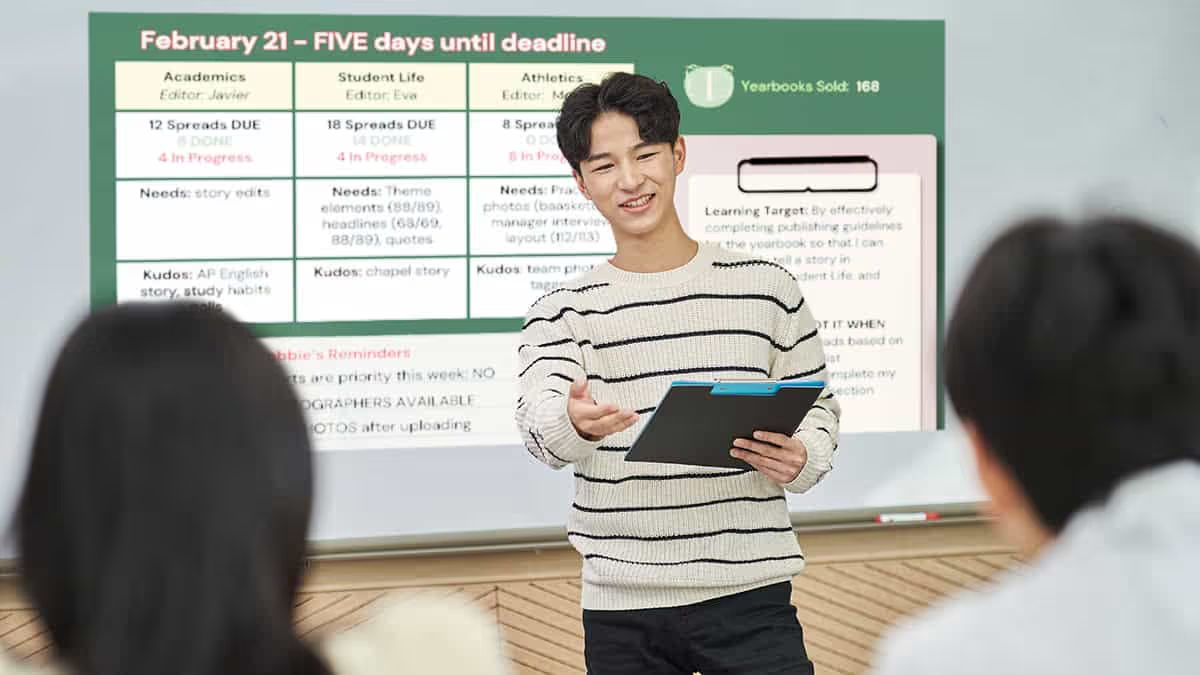
Why you need an agenda slide for yearbook class
An agenda slide is more than an organizational tool: it creates a method to maintain accountability in your yearbook class.
What goes on an agenda slide?
You could write the items below on your whiteboard easy peasy. Many advisers told us they prefer to create their agenda digitally because it provides a record for administration and parents (hello, accreditation year). The following year, it simply needs basic edits to remain current. Give yourself bonus points if you adapt the slides to your yearbook theme and/or color scheme.
Because a structured daily agenda slide helps your yearbook staff understand what to expect during the class or club session, we like to include these five things:
- Date and class information
- Learning objectives or goals for the day's lesson
- Class agenda
- Deliverables
- Announcements and reminders
If your yearbook program is a club, and you do not need CTE or ELA standards, use a brief description of the yearbook club's purpose or mission to keep activities aligned.
Two examples of organization and accountability
Obvious statement: the yearbook is a big project. By creating and posting an agenda, you can chunk the work to make it realistic.

Example 1: project-based agenda
The example above clearly identifies the learning objective and how they complement the broader yearbook project. The stand-up meeting includes deadline setting, content creation, and photo assignments. This method helps all editors and support staff see how their section contributes to the entire yearbook.

Example 2: time-management agenda
Many clubs meet twice a week, so chunking the work time helps the team know the purpose of their time together. That sounds simplistic, and we’ve seen strategies such as Deep Work or the Pomodoro Technique highlight short periods of focus to yield more valuable results. Less is more. Reserved space on the agenda slide also informs about upcoming deadlines, events, and opportunities.
If your campus or district requires documentation, a deck of yearbook agenda slides complements your curriculum map. It ensures both your production and learning outcomes align. (True story: administrators love them.) They also simplify preparing for sub plans and absent students’ catch-up bins: students come to expect your established routine.
https://blog.treering.com/free-yearbook-curriculum

Yearbook class: what to teach the first six weeks
You thought yearbook class was just putting pictures on pages. Then a roster arrived. Then the expectations to meet state and national standards for ELA, CTE, and 21st Century Learning. Cue migraine.
The yearbook heroes at Treering know the difficulties new advisers face (shameless plug: that’s why we’ve created a contract-free, flexible yearbook solution) and we’ve created six weeks-worth of material for your yearbook class.
If it’s your first year advising, select one or two areas on which to focus. As your program develops, deepen those areas and add a new growth target.
For example, year one, you may want to focus on theme development and photography. Year two, expand those areas and add storytelling captions. Year three, further develop your writers with feature stories. Repeat after me, “I won’t do it all! I won’t do it all!”
Week 1 goal: build a mission-centered yearbook staff
Teambuilding
Every day, do something to help your team grow in familiarity with one another. Start with something simple, such as Birthday Lineup followed by some cake. To reinforce all the new names, Hero-Shambo is a raucous way to inspire team spirit while putting names to the faces.
Spend some time understanding personalities as well. Free online tests can provide discussion start points. Debrief either by grouping students who scored similarly and have them discuss what resonated with them and potential misconceptions. Groups could even create a poster or mood board reflecting their strengths.
Theme development
As your year, and your book, should be focused on telling the story, theme development is top priority. Start with a SWOT analysis. Then list all the changes, new initiatives, and differences that make this school year stand out from the last five. Are you doing a building project? Did you add an international program? Is there new leadership? Did you merge with another school? Is this the first senior class that’s gone all the way through from kindergarten?
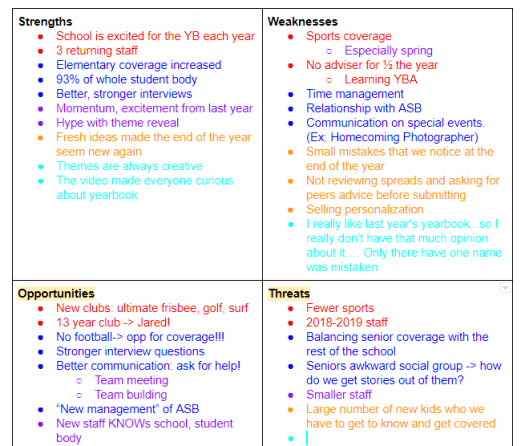
How can you convey this story this year?
Many times, our students come up with a catch phrase and want it to dictate the content. Your story—whether you have a visually strong, photographic book, or a journalistic yearbook full of features—should lead your look. Our Yearbook Theme Curriculum Module can help.
Photography
There are five beginning photo exercises in Treering's blog. Spend some time getting to know your team's cameras before jumping in. This may also be time to involve the editorial staff: assign an exercise for each to learn and facilitate.
Reporting
Start asking your yearbook students a question of the day. (If you have a large class, you may want to poll 3-5 students each period for time.) Before the next class, your yearbook students should ask that same question to three other students (no repeats). If you have 12 yearbook students, that’s 36 student quotes you can include in a sidebar each day, 180 each week! Use a Google form to input responses and track respondents. This not only increases coverage possibilities, but it warms up your student body to be pursued and peppered by your yearbook students!
Week 2 goal: set and slay yearbook goals
Photography and design
Begin the week with a photo scavenger hunt. Use the results to introduce your procedures for file naming conventions, uploading, and tagging. Model how to design a spread with their snaps.
Introduce yearbook vocabulary then grab some magazines to play a grown-up version of show and tell. Reward students who can find eyelines, ledes, and serif vs. san serifs fonts!
Further demonstrate the principles of design and get in your yearbook software to recreate some of the layouts you loved in the magazines. You should be in your design application 2/3 of the week so your staff gets comfortable.
Teambuilding
Since focus this week is on goal-setting, use communication games such as Blind Polygon or adapt Minefield for your classroom. In both scenarios, identify the goal and evaluate what worked and what didn’t when you are finished.
Revisit the personality profiles from week one—what effect did they have on students’ problem-solving and communication?
Theme development
It’s also time to revisit your SWOT and story-of-the-year brainstorm. Think of your senses: how does it feel, sound, smell, and look? (Don't worry, we're not going to encourage tasting your yearbook!)
Determine tangible ways to convey the story of your year. In the Design Module, we talk about color and fonts. Both are two key visuals to harness the essence of your theme.
For example, If your yearbook theme is Move Mountains, you are going to want to use colors and fonts that are bold, signifying strength.
Reporting
Continue your question of the week, and evaluate the process. Where are students struggling?
If fear is a hindrance, watch Jia Jiang: What I learned from 100 days of rejection. If it’s procrastination, watch Tim Urban: Inside the mind of a master procrastinator. In your debrief, develop concrete strategies such as a few scripted lines or a schedule.
Marketing
Make it a point to consistently market your book and your program. It's possible to plant proverbial seeds for next year's staff in September!
Week 3 goal: build your team’s toolbox
Teambuilding
Begin holding weekly staff meetings. In these meetings, discuss event and photo assignments for the week, when your next deadline is, and have every staff member give a 15-second update of their work. A simple, “Here’s what I’m doing, and here’s what I need to do” will keep it focused. You're building a culture of accountability.
Editors can also lead the meeting by using the first 15 minutes of class to develop a skill: photographing in classrooms with fluorescent lights, sharpening images in Photoshop, cropping images, etc.

Reporting
Evaluate the question of the day. Have students put last week's action plan into play? What percentage of the student body has been asked? Discuss with your staff where you will begin incorporating these quotes and what questions you can ask to tie-in with your yearbook theme.
Start a word graveyard: on a prominent bulletin board, list “dead” words and phrases. Have a reason why you’re dumping one: for example, many athletes will say their team is a “family” as will ASB, the dance company, the math department, etc. Teach interview skills to develop this: what drives your bond? Tell me a way a teammate was dependable. What traditions do you have that make you like a family? Get the story.
Design
Develop your style guide and decide which elements (e.g. bleed, color overlays) will enhance the story you are telling this year. Your editorial staff should begin building templates in your design software. By the end of the third week, your entire team should be comfortable doing basic tasks in your design platform.
Week 4 goal: progress!
Teambuilding
Using comics or stock photos, create Comic Creations. Then, with a partner, students should list three questions they could have asked to get the quote. Use your word graveyard and our Five Common Topics as needed to build stronger questions.
Teach the expanded caption using the Comic Creations quotes. You may want to first show NSPA’s Terrible Leads as a non-example before modeling your own yearbook gold.
Theme development and design
Evaluate your style guide and templates using NSPA’s design checklist; adjust as necessary. This is a good time to pause and remember our mantra: “I won’t do it all! I won’t do it all!”
Use an idiom dictionary to create spin-offs for your theme. Let’s return to our Move Mountains theme. For recurring modules, you could use:
Photography
By now, your students should be photographing class activities, school events, and sports practices and competitions regularly. Have your editorial team select some photos of the month to show on a projector. Discuss, as a group, what made the photographs standout in their composition and storytelling. Elicit advice from the photographer. Share top photos on social media with a call to action: “Want to see more? Buy a Yearbook!
View this post on Instagram
A post shared by Treering (@treeringcorp)
Social media serves a double purpose: market your program and your yearbook!
Marketing
Create a social media calendar and assign posts to students. Each post should be approved, in writing, by an editor and another student before going live. You may want to utilize a group messaging system or a shared document to track approval and content.
Week 5 goal: momentum
Teambuilding
Before this week’s staff meeting, ask an editor and a staff member to each select a Yearbook Hero to celebrate. Share the love on social.
Introduce peer evaluation by partnering two students, equipping them with a rubric, and asking them to evaluate a strong example of design. Because it’s “easy” to critique something weak, this forces students to understand why a layout works.
Allow students to sign up for one-on-one sessions with you, and possibly your editor in chief, during class where they can have undivided coaching.
Theme
During your next editorial meeting, ask the team to brainstorm theme-related
Photography, design, and reporting
After your weekly staff meetings, you should have a good idea of the the page statuses for the yearbook. Your team will continuously be in a cycle of photographing-reporting-designing. Monitor progress by continuing to set and track goals. Break up the monotony by adding in relevant skill-building lessons and—dare I say it—nothing. Sometimes, a study hall so your students can catch up is a great way to show you value their time and commitment to all things yearbook.
Week 6 goal: establish routine
Rest assured you created consistency and accountability with a weekly team meeting. Because of this, students know their weekly assignments such as social media posts and photo shoots. All of your yearbook team is trained on your software, and with peer editing, a safe dialogue and pre-disclosed standards will refine areas of growth. Is it perfect? No. Will it ever be? No. And that’s OK!
Remember your role: advise. Here's a checklist to help.

QR Code is a registered trademark of DENSO WAVE INCORPORATED.
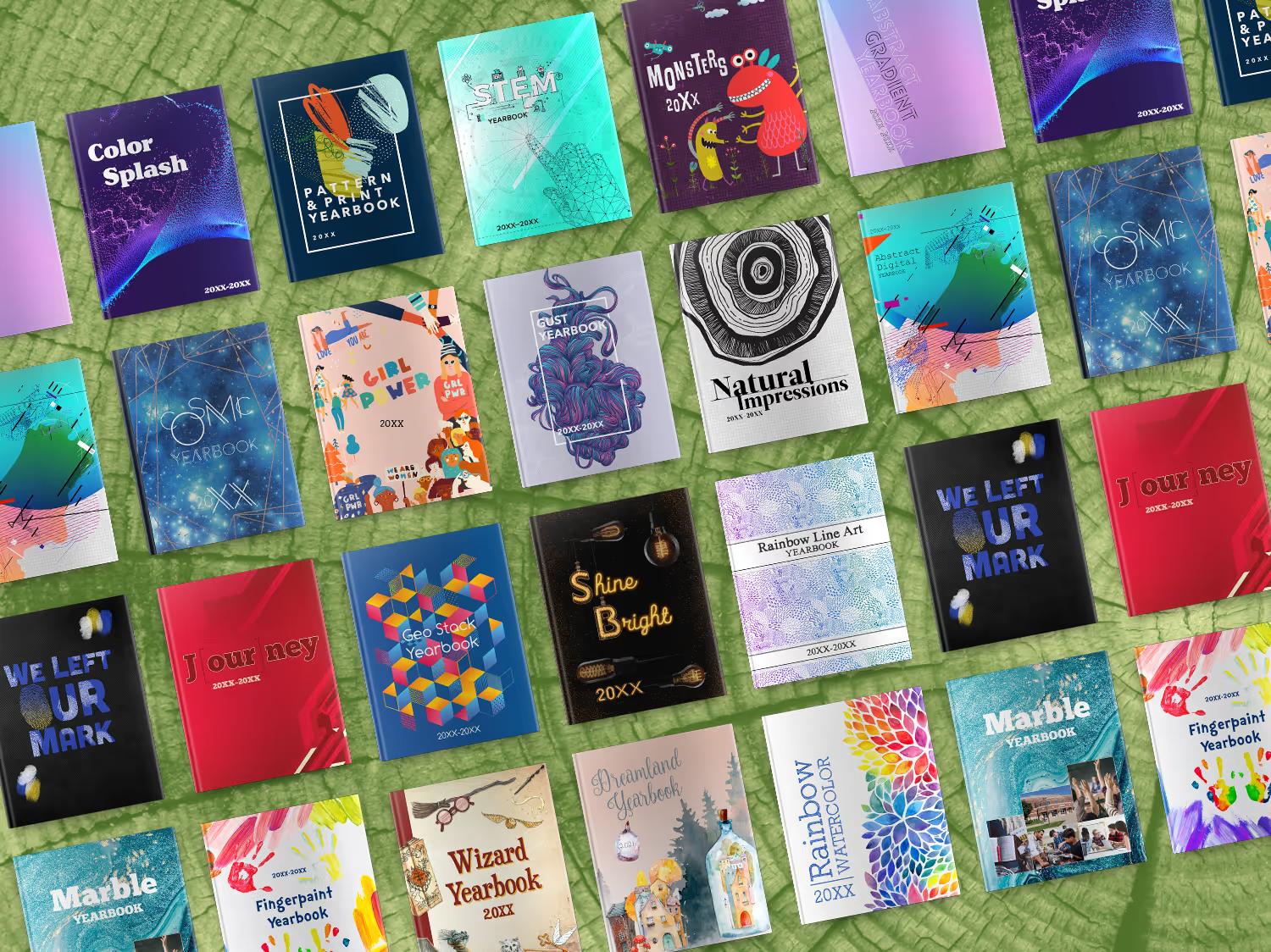
5 tips to help you find your yearbook theme
Whether you're scrambling at the end of the year, or trying to decide at the beginning of the year, coming up with a yearbook theme is tough. How do you come up with the title of a book that hasn’t been written? You can play it safe and gather everyone’s feedback to eventually land on a yearbook theme that everyone hates the least, or you can choose for the group, and face criticism--but no help--for your idea. Let’s be real, neither option sounds fun. I interviewed different yearbook editors to try and gather some advice to help you get started.
Here are 5 questions to ask yourself, followed by 5 thought-provoking theme ideas to inspire creativity.
5 questions:
Why should you run a yearbook cover contest?
Academic goals are of course the primary focus at school, but consider asking the students to layout SMART (specific, measurable, action, reasonable, time) goals at the beginning of the year. Come the end of the year they can go through a self evaluation that will lend itself nicely to the story of your yearbook. Goals could be long or short term. I remember having goals to read a certain number of books throughout the school year as well as trying to make it through a day without doodling on my hands/arms/legs.
What’s popular with your students this year?
From movies to music, snacks to snapchat, pop-culture can be a great way to get some inspiration for your theme. The benefit to using a theme centered on pop culture is it adds an extra layer of nostalgia beyond your photo and story memories. The down-side, well as a child of the ‘80’s I can honestly say the photo of me with 5 foot tall bangs and fanny pack was embarrassing enough, not sure I need to be reminded of the countless hours lost to New Kids and Nintendo.
How are your student’s different from others?
This might seem like a difficult question, but ask your students. They will typically know what makes their school “better” than the rival neighboring school. Growing up most of my classmates lived on a lake, because of this we were all about the water sports. We knew how to waterski off the dock, build pyramids, and wakeboard. We would have loved to see this represented in the theme of our yearbook, as it was unique to our school. You don’t need to limit yourself by the schools colors, the yearbook should tell the story of one moment in time and school colors are not unique to one year.
What issues are student’s passionate about?
Pop culture changes year-over-year and with that children become passionate about different issues facing the world today. Similar to Michael Jackson and Free Willy raising awareness on preserving and protecting the ocean and its inhabitants, today children are talking about climate change and fact checking. Lucky for them they will never understand the frustrations of the card catalog now that Alexa can answer just about all their questions. Consider what issues students are talking about in class and how they are learning to make a positive impact in our future.
Who are your student’s role models?
You might be surprised; kids today are #woke. Gone are the days where Micheal Jordan and Madonna served as the role models of youth. Kids today are looking up to people like Elon Musk and Ruth Bader Ginsberg. They are not just aware of what’s happening in the world, but they are choosing their role models wisely.
Now that you’ve asked yourself a few questions, I thought I’d share some brand new themes that might get you on the road to something truly unique for your yearbook. Below are 5 fresh themes for you to consider for your tribe.
5 theme ideas:
Fingerpaint

This theme captures the spirit of imagination, similar to Harold and his purple crayon, each student has the ability to draw whatever they might need, leaving their unique handprints behind as a reminder of what they have achieved.
STEM
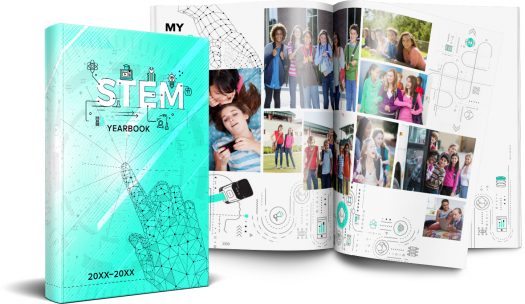
Early learning experiences in Science, Technology, Engineering and Mathematics (STEM) are critical in preparing elementary school students for STEM learning in middle and high school, as well as for future careers in STEM-related fields. This theme talks to more than just the tech culture our children live in, but how schools are more focused now than ever in bringing STEM to the forefront of learning.
J[our]ney

With multiple different color options, this is a classic, bold, choice for a yearbook tribe wanting to add some graphic texture to their book. It’s sentimental in begging the question, “What does the school care about for the year?” There are many ways to play with this theme. Consider some wordplay:
- Y[our] goals
- Enc[our]agement
- N[our]ishment
- Study h[our]
- Y[our] story
Color splash
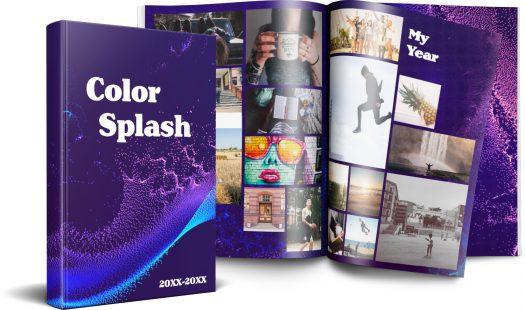
It’s subtle yet elegant in the movement of the dots first flowing together then breaking off to find their own individual path, but not before first making a splash. This yearbook theme would be best for books that are text heavy, given the words will pop on the purple background, and there isn’t a lot of distracting artwork.
Cosmic
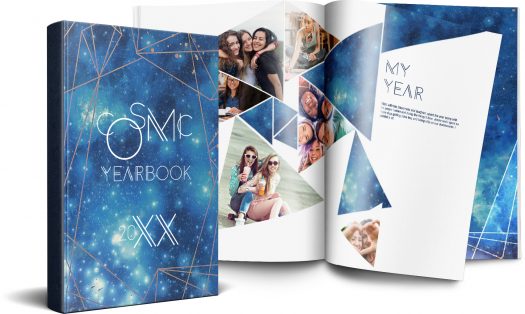
The applications of this theme reach to infinity and beyond. From the single star that shines bright to the entire constellation of stars, our students are pushing the boundaries of learning to their outer limits.Each yearbook tells the story of just one year, whether your theme is how power corrupts, as in J.R.R. Tolkien’s Lord of the Rings, or love and loss as in Nicholas Sparks’ The Notebook, (I genuinely hope those aren’t actually your themes) these ideas should help you get started. If you are looking for more inspiration, check out this handy theme generator, it might get you and your yearbook tribe a bit further on your journey.

Teaching yearbook: 11 resources to bookmark
We created a master list for practical, tested strategies that work in a real yearbook classroom. If you didn’t volunteer to take on yearbook class (we are few, but mighty), you either showed up late to the meeting, or you’re a new teacher. Then what? Traditional teacher prep programs trained us for classroom management and subject-specific pedagogy. Teaching yearbook is a hybrid of design, photography, marketing, and event planning. It’s a prep that requires skills from multiple careers, and most of us learn them as we go, under deadline pressure, and with a room full of students watching. Major aura points loading.
Professional development resources
A stronger you means a stronger program. Here are some resources to help you take a recess from yearbook stress.
Webinars
Tuesday “Lunch and Learn” sessions are twenty minutes of focus to equip you and your team throughout the year. Just pick your time zone, log in, and leave with something you can use today.
Thursday sessions are one-hour overviews to help you plan, design, and publish with purpose. These synchronous training series start with the same line, “Hi, we’re Cassie and Erika, and we are here to join your yearbook team.”
They mean it.
Dealing with complaints
Two customer care experts, Treering’s Abby Oxendine and Chris Frost, a former Disney guest services agent, shared their proactive approach to working with teachers, parents, and students with yearbook complaints.
- Listen to the complaint
- Ask for specific details
- Offer a solution
- Follow up, follow up, follow up
Adviser burnout
We’d rather you have this one and not need it.
Some preventative burnout measures include workflow adjustments, such as
- Reusing layouts from previous years as templates
- Creating repeatable workflows, such as setting up photo and text styles
- Taking advantage of built-in design automations, such as portrait autoflow
If you’re already there and need a yearbook mindshift, build gratitude and celebration into your program… then call your publisher!
Planning resources for yearbook
Start the year with a clear plan so you run the yearbook, not the other way around.
Job descriptions
Clear expectations help guide student and volunteer yearbook teams. When the proverbial ball gets dropped, it’s easy to point the finger; being proactive with your yearbook team early in the school year will improve your workflow. It will develop ownership. It will reveal leaders.
Staff manual template
Another way to develop proactive communication is through a staff manual. A yearbook staff manual outlines policies and procedures for class time and crisis time. It includes how you will handle:
- Confidentiality
- Photos
- Superlatives and senior quotes
- Journalistic integrity
- Grading
- Style guide
- Content approval
- Equipment
- Complaints and refunds
Agenda slides for yearbook class
Agenda slides provide accountability for your yearbook team. They can be project-based or have a time-management focus. Either way, you should include these five things on your agenda slide:
- Date and class information
- Learning objectives or goals for the day's lesson
- Class agenda
- Deliverables
- Announcements and reminders
Grading checklists
Use checklists to help students prep for submission and grading.
Younger students and emerging designers use checklists to have a structured framework, to help them remember the essential elements of a spread. Returning yearbook students use checklists as a tool for quality control and peer review.
The checklist becomes an educational resource in itself. As students engage with it, they absorb design principles and develop a keen eye for what works in terms of design and theme development.
Instructional resources to build out your curriculum
Give students the tools, skills, and confidence to create their best work without you having to reinvent the wheel.
Free yearbook curriculum
When you have classroom teachers create the curriculum and classroom teachers vet the curriculum, it’s A+ material. The eight modules each include five days of instruction:
- Daily learning target
- Bell ringer
- Interactive lesson with guided student practice
- Exit ticket
Clubs with limited instructional time can scale using the first day’s lesson from each module. These standalone lessons are designed to give yearbook club sponsors the foundation for teambuilding, theme, design, writing, photography, marketing, and proofing.
5 Photo mini lessons
Mini means focused. (No pun intended.) Each of the five lessons works on one area of photojournalism to help students capture action and reaction. These lessons include ideas to strengthen students’ understanding of
- Rule of thirds
- Photo angles
- Cell phone photography
- Depth of field
The final lesson is a cumulative assessment in the form of photography bingo.
Bell ringers
Start each meeting or class period with the yearbook top of mind by using one of the 60 curated bell ringers. Focusing on design, photography, theme, and yearbook critiques, these five-minute warm-ups provide a launch point for instruction, work sessions, or discussion.
Proofing tools
Last on the list, but not last priority, proofing your yearbook should be accomplished weekly and monthly plus a cumulative review. Treering's proofing tools include 99 PDF proofs plus a complete copy of your printed book (workd in progress welcome).
When including proofing in your teaching routine, yearbook advisers may want to involve campus personnel outside of the yearbook team: the school secretary, PTO/PTA leaders, and maybe an English teacher.
While teaching yearbook may not have come with a roadmap, you don’t have to figure it out alone. Using professional development resources, planning tools, and instructional, you can create a structure that makes the work manageable and meaningful for you and your students. Choose one of the above to put into practice this week, and use it as the starting point for building a program that grows stronger each school year.
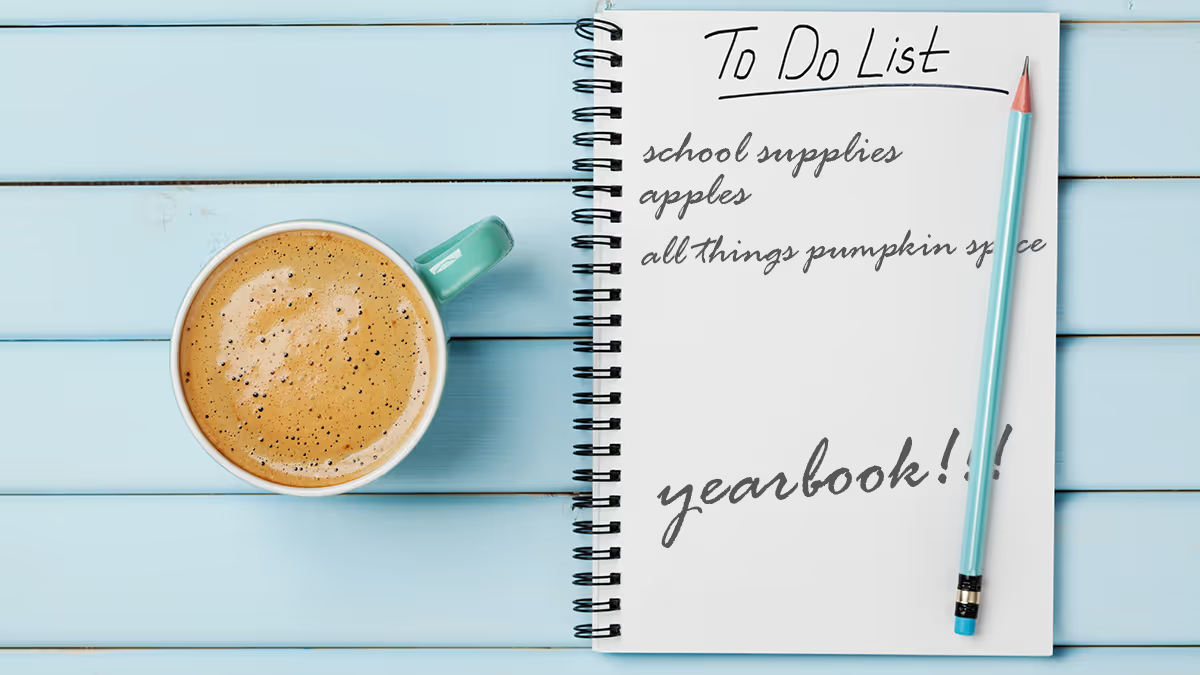
5 things to do to sell more yearbooks… in the fall!
Back to school means back in business. Selling your yearbooks should start as soon as you do! Here are five easy ideas to immediately implement to gain sales momentum at the start of the school year. Plus, we're giving you a social calendar and slew of sales flyers you can customize, then share.
1. Stick it to them
K-12 yearbook adviser Erika from California goes sticker crazy: “Our class meets 7th period, and with end times being staggered, my students run to the lobby and place a sticker on each [elementary] student as they head to the pick up lines.” The stickers have purchasing info on them.
In Georgia, adviser Dara does the same, then takes it one step further by sending a humorous follow up email:
We didn’t want you to get stuck without a yearbook, but if you accidentally ran the reminder sticker through the wash, here’re some handy tips to take care of it.
Consider designing your stickers to match the yearbook theme for a branding tie-in.
2. Plan posts
We all know the cliché: failure to plan is a plan to fail. Use a promotions calendar to diversify your posts and make sure your yearbook sales and marketing strategy match your audience.
We’ve created a free social media calendar to promote your yearbook and your program.
Bottom line: parents buy the books. They’re mostly on Facebook and Twitter, so angle your yearbook sales posts to them. Unless you’re a huge *NSYNC fan, reading buy, buy, buy is not going to get the job done alone:
- Use #throwbackThursday as a feature for campus leaders and parent volunteers to pose with an old yearbook
- Ask parents to share their advice to seniors
- Do a guess the teacher feature with senior photos
Social proof is one way you can positively encourage others to support your program by buying a yearbook.
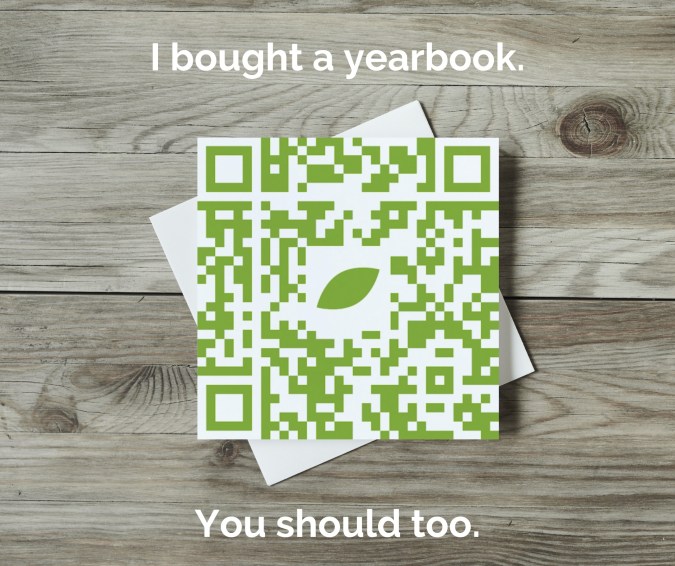
We trust our mom friends, so let’s give them a social badge to share.
We want students to want the book. Mix in student-centered messaging on Facebook and Twitter, such as reasons to buy a yearbook or highlight yearbook photos from a recent event that showcase non-buyers. Also, focus social media efforts on TikTok and Instagram to:
- Play up a trending sound or duet with a popular video
- Post a variety of messages to increase engagement
- Partner with campus influencers (ASB, PTA/PTO accounts, athletics) to hype your yearbook or upcoming event
3. Sell your program
One step beyond using social media to post links of how parents can buy yearbooks or recognition ads, is to show people the value of your yearbook program. The people who help make the book are just as important as your product.
- Show behind the scenes work: time lapse Photoshop work, someone hand drawing a layout, the yearbook committee meeting up for lattes and layouts
- Have the student body vote on a dominant image for a spread
- Reveal sneak peeks of the book
- Share your goals (e.g. 200 new followers, 60 books sold by December, 10 photos submitted) and, more importantly, how you celebrate
- Thank the yearbook heroes publicly on a #thankfulnessThursday
4. Simplify your yearbook sales processes
When someone says, “I need to buy a yearbook,” then you should be ready to sell it, not hand them a flyer. Repeat after me, “Sell the book.”
Evaluate your yearbook sales platform
Your yearbook program is a business whether you have a multi-year contract with book minimum orders or not. Therefore, one way you can serve your customers aka mom and dad is to make it easy for them to buy your product!
- How many clicks does it take to go from home to checkout?
- Do you have to scroll for days?
- When you share an ordering link, it is two miles long?
- Can you link directly to your school’s store or do families have to search?
- Are the sales reports easy to find and read?
Crowdsource efficiently
Parents want to buy your yearbook because they know their child will be in it. Make it easy to contribute:
- Add a specific, bi-weekly call-to-upload to your social calendar
- Pass out cards at games and events with your yearbook email to that mom with the camera
- Give shout outs to people who send you photos
- Use QR codes

Use QR codes on all. the. things.
5. ReMEMEber the posters
Texas PTA mom Rachael said she drives past her children’s school every week. When there’s a big announcement, such as yearbook sales, her school puts a banner on the fence or a series of yard signs. Because it happens intermittently, she knows it’s valuable.
Old school paper posters can be effective (just don't be wasteful!) if the messaging is correct and the location is on point. While we love a good yearbook meme, keep it clean, positive, and fun—just like your yearbook!
QR Code is a registered trademark of DENSO WAVE INCORPORATED.

